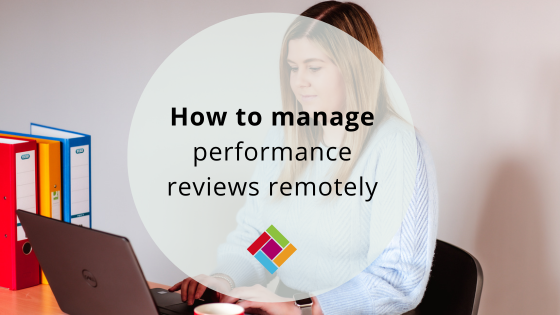
One of the biggest concerns about remote working is how line managers can ensure employees are performing well in their roles. Line managers need a long-term strategy to ensure that staff are performing. We have put together this guide for managers on how to manage performance reviews remotely.
Consider how to manage performance reviews remotely
Find out whether your employees respond better to an annual review, or are likely to prefer an ongoing assessment. This could be different for each member of staff. Read this guide to appraisals to understand which format will work best for your business.
Set up a remote performance review
Here are a few things to remember when managing performance reviews remotely:
- Find the right time: arrange the review a couple of weeks in advance to ensure you both can find a time that suits you.
- Try and arrange the review at a time when neither party is likely to be disturbed, have a good internet connection and can both be at a comfortable and private place to conduct the meeting.
Be fully prepared
- The review will go best when both of you are more prepared – think about what you want to get from the review and ask your employee to also consider this. Are there any areas of concern or areas for potential development you can discuss?
- Do you need to look at different sources of information to get a complete picture of the reviewee’s performance? You may need to look at systems/call data to ensure you get a balanced view of performance. Don’t make assumptions about performance just because they are remote, try to look for factual evidence.
- Talk to the reviewee’s peers to get their feedback on the reviewee’s attitudes and performance. This is also known as 360 feedback and is a great way to fully understand how your employee is performing and collaborating with the team. Try to choose a variety of peers/stakeholders to get feedback from to ensure you don’t have a biased view.
- Review notes from the employee’s previous review to assess in their upcoming review whether they have been addressed. Was there a plan put in place with a timeline?
- Encourage your employee to do a self-evaluation before the review. This will provide areas for discussion, and identify areas where they need to develop and/or need your support.
- Ensure that all equipment is set up prior to the review – including video equipment so that everything goes seamlessly on the day.
Set the right tone – use video
- We are all now used to video calls, and these work so much better in a review situation than a telephone call. Body language can tell you a lot about how your employee is feeling so we would always recommend video if you can’t get together face to face.
- Video calls can also help you ease any nerves the reviewee may have, as video is more humane and personal.
Look at the bigger picture
- Don’t just look at the employee’s most recent behaviour, look at all their achievements and actions in the time since their last review.
- Try to focus on the employee’s learning and growth since their last review.
- Remote workers are likely to experience more loneliness and loss of connection compared to those in the office and may feel overlooked or forgotten, so be sure to acknowledge their efforts and praise their achievements.
Discuss poor performance with empathy
- If someone is performing poorly then it is important for that to be addressed. However, instead of just identifying what the employee is doing poorly, look at the reasons why. See if there are ways you can help support them. Take a look at our eBook ‘‘How to manage difficult conversations‘ for some guidance.
- Use this one-on-one time to talk to your employee about how they are feeling, and to allow them to use that discussion to open up if they are struggling and need your help. Check out our free resources for employee wellbeing if you need to signpost them for extra support.
Plan for the future
- Discuss with the employee some targets that can be achieved by their next review – make sure these targets are SMART (specific, measurable, achievable, relevant, and time-bound) and align with the company’s targets.
- If an employee has said that they need support, be sure to provide it after the review to help the employee’s development. Consider how this will be monitored and tracked.
- The review might show that smaller, more frequent check-ins are required with the employee, if so, make sure to facilitate this. Not everyone likes an annual review and some employees respond better to ongoing catch-ups and check-ins.
- Be sure to write down all that was discussed during the review, so it can be referred to before the employee’s next review.
For more advice on how to manage performance reviews remotely, you can find out how to work with Bespoke HR here.